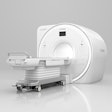CHICAGO - The physical wounds from brain or spinal trauma aren't the only effect of the injury: individual bankruptcy can prolong the pain of the experience, according to University of Washington researchers.
Annemarie Relyea-Chew, J.D., M.S., research scientist at the University of Washington in Seattle, and colleagues conducted a study that assessed the incidence of personal bankruptcy increases after hospital admission for serious injury. They presented their findings on Tuesday at the 2007 RSNA meeting.
"The U.S. has increased its proportion of the GDP (gross domestic product) it spends on healthcare, and medical imaging is a key driver in that," Relyea-Chew said. "And it's affecting patients: the most recent literature suggests that 30% to 50% of individuals interviewed who declared bankruptcy stated that illness and medical bills contributed to their decision to file."
The group examined the bankruptcy petitions in the Western District of Washington state of 81 debtors with traumatic brain or spinal cord injuries admitted to a level I trauma center between the years of 1996 and 2002, and compared them to 80 noninjured debtors. Injured debtors filed for bankruptcy between 2001 and 2004; the noninjured control group was randomly selected from all bankruptcy filings during that same period.
The study compared net wealth, medical debt, and current income between injured and noninjured debtors, and between cases with commercial and public insurance. Data from the trauma registry used were linked to the bankruptcy database using Social Security numbers.
The group found that at the time of the filing, the injured debtors had fewer assets than the control subjects, with median incomes of $11,000 versus $30,000. There was no significant difference in household net income or expenses between the cases and controls. Median medical debt in the injured group was $1,200 -- and was higher in more severe injuries -- while median medical debt in the control group was $0.
"We found that those injured debtors who had commercial insurance filed for bankruptcy more frequently, by 33%, and earlier," Relyea-Chew said. "Contrary to popular belief, the insured are insufficiently protected."
Although Relyea-Chew acknowledged the study's limitations, including lack of longitudinal insurance data and the fact that the comparison group could not be irrefutably deemed "healthy," she concluded that injured patients accumulate medical debt that can lead to bankruptcy despite public or commercial insurance, and suggested that a more comprehensive medical insurance system could lower the number of patients who file for bankruptcy.
By Kate Madden Yee
AuntMinnie.com staff writer
November 27, 2007
Related Reading
Unpaid hospital bills getting bigger in U.S. - analyst, October 11, 2006
U.S. lawmakers seek changes to bankruptcy bill, prompted by medical debts, February 10, 2005
Copyright © 2007 AuntMinnie.com




















